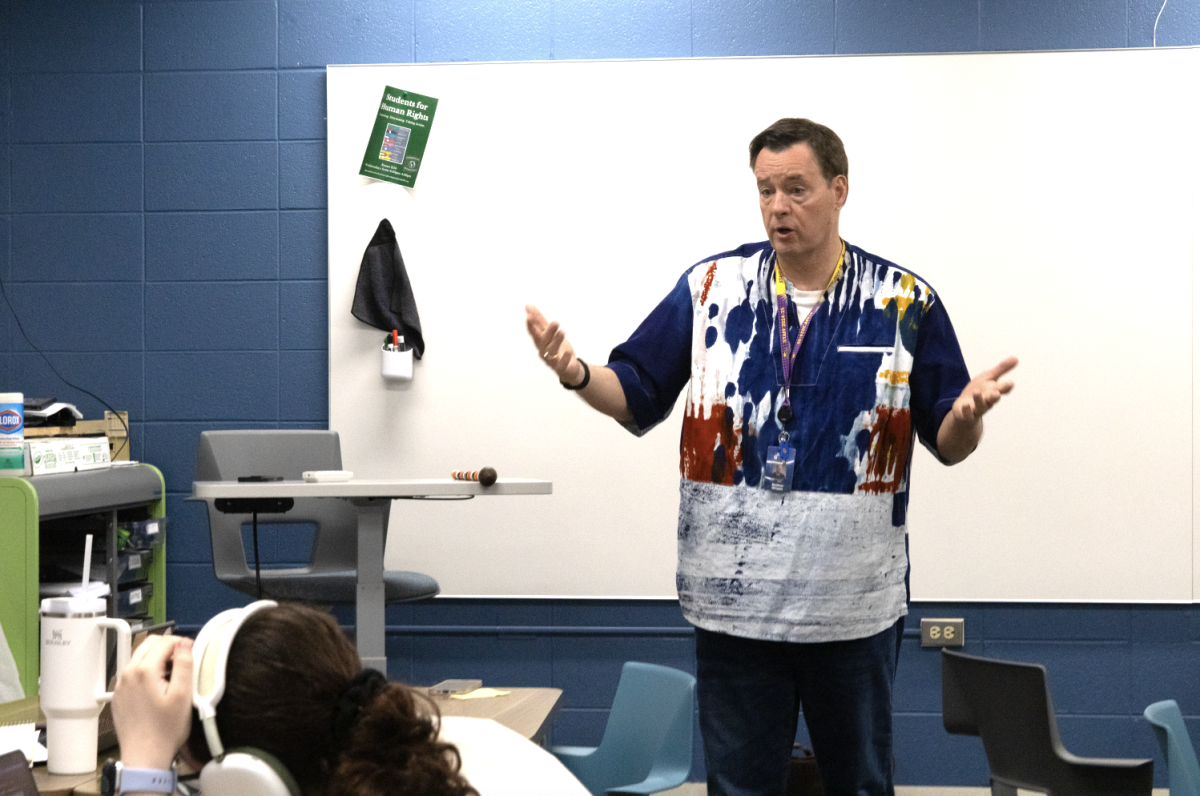Sophomore Sienna Gilles’ family gathers around the dinner table laughing, smiling, and enjoying each other’s presence. As the conversation continues, she awaits her favorite food: the Charoset, a dish that combines fresh apples, spicy cinnamon, crunchy walnuts, and wine to create the perfect level of sweetness.
They sit together for the Seder, the ceremony conducted before eating during the first two nights of Passover, retelling the story of Exodus, the liberation of the Israelites from slavery in Egypt, with various foods on the Seder plate. Once completed, the feast begins.
Passover is a Jewish holiday celebrated for eight days following the first full moon in the Hebrew calendar month of Nissan, senior Joshua Zingerman, Jewish Student Union (JSU) member, explained.
“[Passover] is there to remind us of the difficulties and challenges that our ancestors faced,” Zingerman said.
The traditional Seder dinner is done on the first two nights of Passover, where the family gathers and commemorates the Ten Deadly Plagues that God sent to the Egyptians to urge them to release the Jews, Hillel Crandus, English Teacher and JSU sponsor, explained. Aside from serving as a celebration of liberation, Passover is also meant to be a time to replenish the household, specifically the kitchen, food, and dishes, Crandus said.
“We have to prepare all new food and we use different dishes because you [are] not supposed to use the normal yearly dishes you have,” Crandus said. “The whole kitchen is turned over.”
During the eight days of Passover, depending on the family, all yeast-made foods are taken out of the house to prepare for the coming days, Crandus explained. The foods are then replaced with yeast-free bread known as Matzah, he added.
“Passover is [a difficult] holiday there is [because] you start by cleaning up the whole house,” Crandus said. “You have to get rid of all the bread [and] all the leavening agents.”
Each food on the Seder plate is symbolic of Jewish history, Crandus explained. The Charoset represents the clay bricks the Israelites were forced to use, and parsley is dipped in salt water to represent their tears, he said. Crandus associates the holiday with all the familiar smells and tastes that create unique sensations.
“[I have] this really powerful sensory connection to that moment [of] the year,” Crandus said. “I always get anticipatory right before I’m about to dip the parsley in the salt water.”
JSU emphasizes Passover’s importance at South and creates a community to celebrate within, Zingerman said. JSU always does something to commemorate the holiday each year. Each year, the club invites a Rabbi to tell the story behind the holiday, Crandus said. The club also allows students to share their traditions and helps strengthen their community, he explained.
“It’s nice for [JSU] to have a community of people who share the same experience,” Crandus said. “It’s nice to hear how a lot of our traditions are similar, but also different tweaks to the traditions.”
A popular tradition in the Zingerman household, the Afikomen is a piece of Matzah split into pieces and hidden around the house for the family’s children to find, he described. It was a tradition Zingerman and his sister enjoyed as kids, he added.
“My sister and I would spend 30 minutes chasing around the house looking in every crevice, every bookshelf, under every couch for all these pieces of Matzah wrapped in paper towel,” Zingerman said. “Whoever found the most won.”
Passover traditions may change as celebrators age, Crandus said. As Zingerman got older, his family began to relax around the Seder traditions. While he loved how Passover was when he was younger, he now reflects on the holiday in a deeper sense and shows his gratitude more distinctly.
“We’ve kind of loosened up [our traditions] not because of a loss of faith, but because we’ve come to [realize] that [celebrating] is more about the moral of Passover [and] having the opportunity to be thankful for coming together as a family,” Zingerman said.







